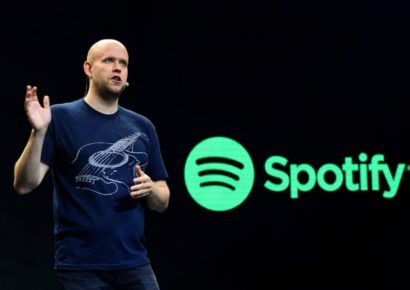Where’s the best place for your music?
It’s long been written that services like Spotify fail to support musicians, earning close to nothing per stream, and even recently asking musicians to pay for play. While Spotify might have the greatest influence over the market today, of course, there’s a bunch of other streaming services out there to get your music up on – some better, some worse.
Today we’re diving into the complex area of revenue per stream, providing some much-needed clarity for all the budding artists out there looking to cash in on their craft.
In Australia, the most popular platforms to stream music on are Spotify, Amazon Music, Apple Music, Tidal, and YouTube. Although it’s starting to become a lot easier overall, for those who aren’t tech savvy, it can prove to be a bit of a complex process to get your music on these services: usually your record label or distributor will upload it onto the sites, or you can do it yourself through the process outlined here.
The following platforms have never published the exact rates they offer musicians per stream, but below are a number of approximations, collected from a variety of sources, and all are listed in $AUD.
Let’s start off with Amazon Music, who offer the quite low rate of $0.00402 per stream. To put that into context, a song would need to be streamed around 295 times to earn $1. Considering his own exorbitant bank balance, you’d think Jeff Bezos would be able to shed out more than that, but remember – this is music streaming we’re talking about here!
Amazon Music is one of the least popular streaming platforms in Australia, mainly due to its infancy in the market and poor user interface. That being said, who knows what can happen in the next few years…
Onto the big guns now with Apple Music, who offer a rate that’s significantly higher at approximately $0.0087 per stream. To earn a dollar, you’d need around 115 streams.
Apple Music is quite popular among Aussie listeners due to the several years of our music being on iTunes and its seamless integration with iPhones, Macs and other Apple products, allowing for great compatibility with playlists from years gone by.
Current streaming titans Spotify offer musicians around $0.0045 per stream, which equates up to around 225 streams to earn a dollar. Spotify is assuredly the market leader in Australia, often commended for the unique playlists they offer to users, expanding musical tastes and supporting up and coming musicians through a crack team of editorial playlist curators.
Spotify were recently put under fire for announcing a new ‘pay for play’ service: for a fee, lesser known musicians can pay to get their music up front on the algorithm. It’ll be interesting to see how this move goes down in the industry, particularly considering how much of a stranglehold Spotify currently holds over the streaming market.
Then we get to Tidal, one of the better streaming services currently on the market. They offer $0.016 per stream – that’s only 62 streams before making a dollar, which actually seems reasonable in comparison to some of the other names we’ve looked at today.
Currently owned by Jay-Z (although that looks like it could change soon), Tidal was the only service that garnered support from music legend Prince, who was staunchly against many other streaming platforms. For a monthly fee not too dissimilar to Spotify, and higher quality audio files, this is assuredly the best service for musicians and listeners alike.
Finishing up is YouTube, which is the easiest platform to upload music to freely, but the worst to make money. The rates per stream/view is a little harder to find, but to earn a dollar from YouTube, you’d need around 2,000 views. It’s extremely easy to upload your music to YouTube, but you’ll need to go viral to earn something decent – or plug your money advertising to receive exposure.
Read more about the history of music streaming in our Musicology column here.




